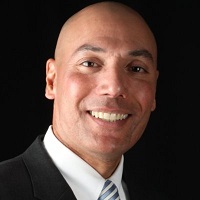 By Dr. Albert Villarin, CMIO, MD, FACEP, Burwood Group
By Dr. Albert Villarin, CMIO, MD, FACEP, Burwood Group
Twitter: @burwoodgroup
Over the last decade, the Internet of Things (IoT) has entered our daily lives in the form of home automation, with sensors being added to fire alarms, door locks, and thermostats. For early adopters, IoT was an exciting reality.
Today, HIT vendors and advisory firms are focused on how IoT can be used in healthcare environments and how it enables providers to apply evidence-based knowledge to clinical data and make treatment decisions. When data from IoT devices is aggregated onto a cloud-based service platform, healthcare organizations can deliver new services that positively “disrupt” traditional care delivery methods.
Imagine this: An asthmatic patient is discharged from a hospital with instructions to follow up with her primary care provider in one week. The patient has her medication, inhaler, and a list of symptoms to watch for that can impact recovery. With home-based sensors and applications monitoring house temperatures, vital signs, and medication compliance, the patient’s data points can be integrated into software that automatically alerts care coordinators of any changes.
The patient’s care team can initiate interventions to address potentially adverse events at the home or relating to the patient’s ability to self-manage. The information made available by IoT technologies could lower readmission rates and equip healthcare providers with new strategies to treat patients outside the four walls of the hospital.
Harnessing the Power of IoT Technology to Improve Care Delivery
Collectively, IoT devices, such as wearables and remote monitoring devices, form a connected care ecosystem both inside and outside the health system that provides unique value and an improved experience for patients, staff, and other end users. With integrated service platforms that repackage products and services to establish new care delivery methods, health systems can simultaneously decrease costs while improving the quality of care.
At Burwood, we believe “IoT as-a-Service” will transform traditional care delivery models and create a new industry paradigm. For example, advanced elderly home care can be improved with continuous monitoring of sensor arrays and biometric devices that provide clinicians real-time clinical information. At the hospital, the same connected care service platform would alert providers of changes in patient status and trigger notifications for early detection and intervention.
This article was originally published on the Burwood Group Blog and is republished here with permission.
